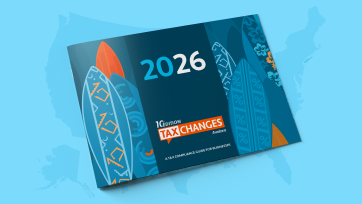
Sales tax registration: What you need to know
It’s hard to believe there was once a time without internet sales tax, but now all states with sales tax have laws on the books to tax remote sales.
But before you can collect sales tax, you need to obtain a sales tax permit (also known as a seller’s permit, reseller permit, transaction privilege tax license, vendor’s license, etc.) from the state tax authority.
Once you’ve determined you have an obligation to collect sales tax in a state, registering for a sales tax permit typically entails the following steps:
Finding out where and how to register. Sales tax permits are issued by the state tax authority, such as the California Department of Tax and Fee Administration, the Florida Department of Revenue, the New York State Department of Taxation and Revenue, or the Texas Comptroller of Public Accounts.
All state tax authorities have a website, though some are easier to navigate than others. For example, you can find a Sales Tax Permit Application on the homepage of the Texas Comptroller, but it takes a few clicks to find the Sales and Use Tax License Applications Forms on the Wyoming Department of Revenue site. Tax authorities don’t try to hide this information, but it’s easier to find on some state sites than others.
Gathering the necessary information. All state tax departments require taxpayers to divulge a certain amount of information about the business being registered and its owner(s). Exact requirements vary by state and may include:
- Type of business (e.g., Limited Liability Company, Profit Corporation)
- Legal name of business
- Name and contact information of all managing members, officers, and/or partners
- Date business was formed
- Driver license number
- Social security number
- Federal Employer Identification Number (FEIN)
- State Employer Identification Number (SEIN)
- North American Industry Classification System (NAICS) code
- Projected monthly taxable sales
Registering your business. Some states require online registration and most encourage it. However, most states do allow businesses to register on paper then mail or drop off the form. It can take as little as a few minutes to register and obtain a permit online, while mailed paper applications can take up to 8 weeks to process.
Registering for a sales tax permit is free in many, but not all, states. For example, there’s a $60 non-refundable fee in Wyoming; and in Colorado, there’s a $16 fee per two-year license plus a one-time $50 deposit that’s automatically refunded once you remit $50 in state sales tax to the Colorado Department of Revenue.
Renewing your sales tax permit as required. While some states (e.g., Texas, Virginia) automatically renew sales tax permits, others require businesses to renew them periodically. For example, all transaction privilege tax licenses in Arizona expire at the end of each year. In Colorado, all sales tax licenses are valid for a two-year period that started January 1, 2022.
Renewal fees may apply in some states.
Take sales tax registration off your plate
If you want to learn more about sales tax registration, check out our 101 guide. And if you find yourself spending more time researching and registering for a sales tax permit than you’d like, you can outsource it. Avalara for Sales Tax Registration can find the forms you need to complete to give you a head start, or it can manage all aspects of preparing and filing sales tax registrations for you.
This post was updated January 30, 2023.

Avalara Tax Changes 2026 is here
The 10th edition of our annual report engagingly breaks down key policies related to sales tax, tariffs, and VAT.
Stay up to date
Sign up for our free newsletter and stay up to date with the latest tax news.














